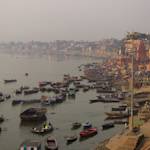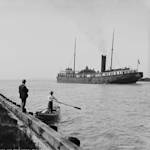Volga River
2021 CE • Russia
"About 2,300 miles long, the Volga—sometimes referred to as “Volga-matushka,” or “Mother Volga”—is the longest river in Europe and the biggest by water flow, arcing from northwest of Moscow around and down to the Caspian Sea. Some 60 million people—about 40% of Russia’s population—live in its basin, which spans almost a tenth of the country’s vast territory. Moscow, with its 12 million people, gets most of its drinking water from the Volga via the Moscow Canal . . . As an artery of commerce, a source of energy and drinking water, and a conveyor of history, the Volga touches nearly every aspect of life in Russia." The Volga supports a diverse array of wildlife, including various species of fish such as sturgeon, perch, and pike. The river is also home to beavers, otters, and a variety of bird species, including herons, eagles, and ducks. Despite being a vital source of water, transportation, and ecological resources, the Volga River faces numerous threats. "The river has become polluted, silted up, and overwhelmed by invasive species . . . Widespread toxic algal blooms are now common. As global temperatures rise, the Volga basin is getting less and less rainfall in the spring and summer, and more snow in the winter . . . In a way it isn’t really a river anymore—it no longer flows naturally. It is now so mediated by human intervention that it is better thought of as a machine."
Olga Dobrovidova, "The Soviets turned the Volga River into a machine. Then the machine broke." MIT Technology Review, December 15, 2021.
Image: kuchin ster, CC BY 3.0, via Wikimedia Commons


Learn about Maya Lin’s fifth and final memorial: a multi-platform science based artwork that presents an ecological history of our world - past, present, and future.

Discover ecological histories and stories of former abundance, loss, and recovery on the map of memory.

Learn how we can reduce our emissions and protect and restore species and habitats – around the world.

See how art can help us rethink the problems we face, and give us hope that each one of us can make a difference.

Help make a global memorial something personal and close to home. Share your stories of the natural world.


